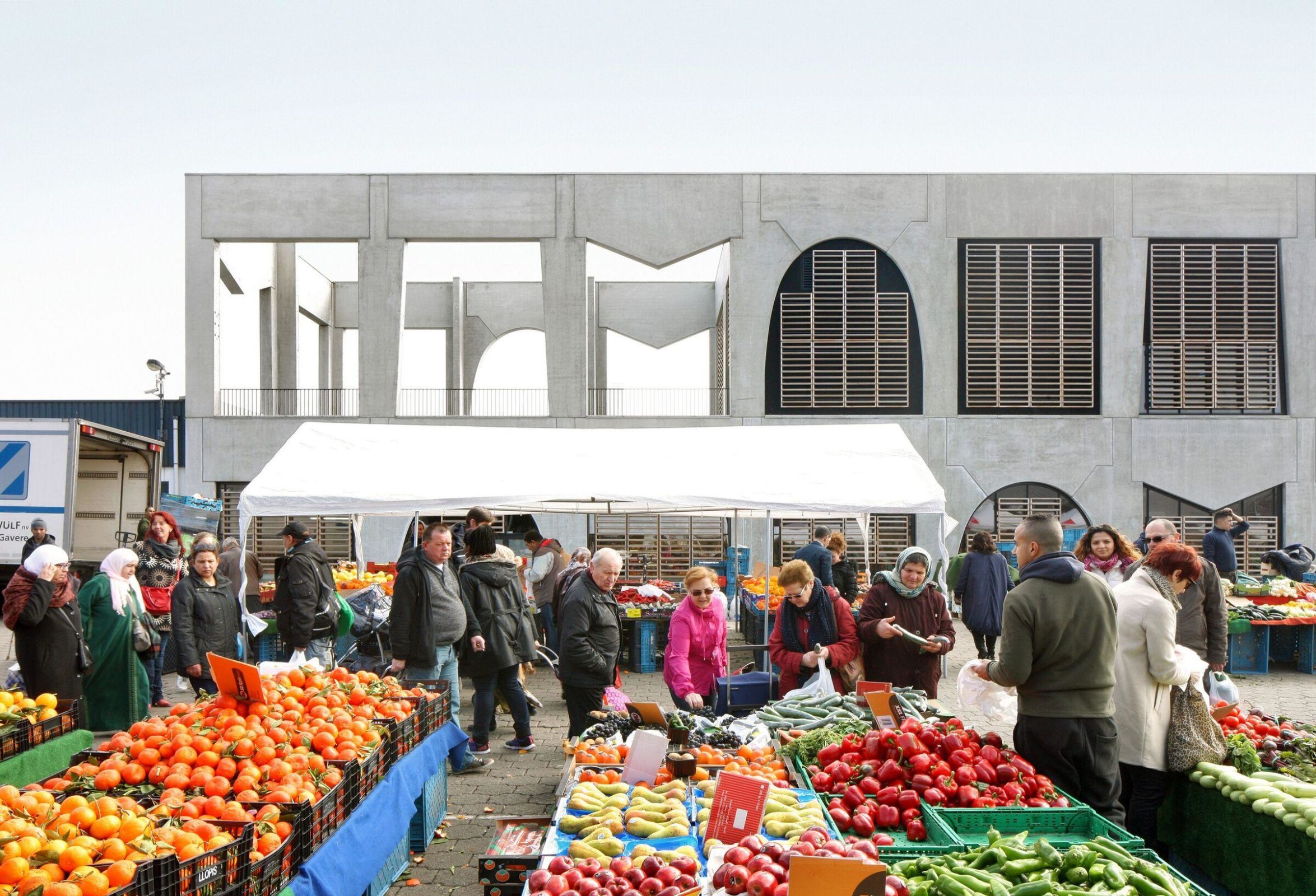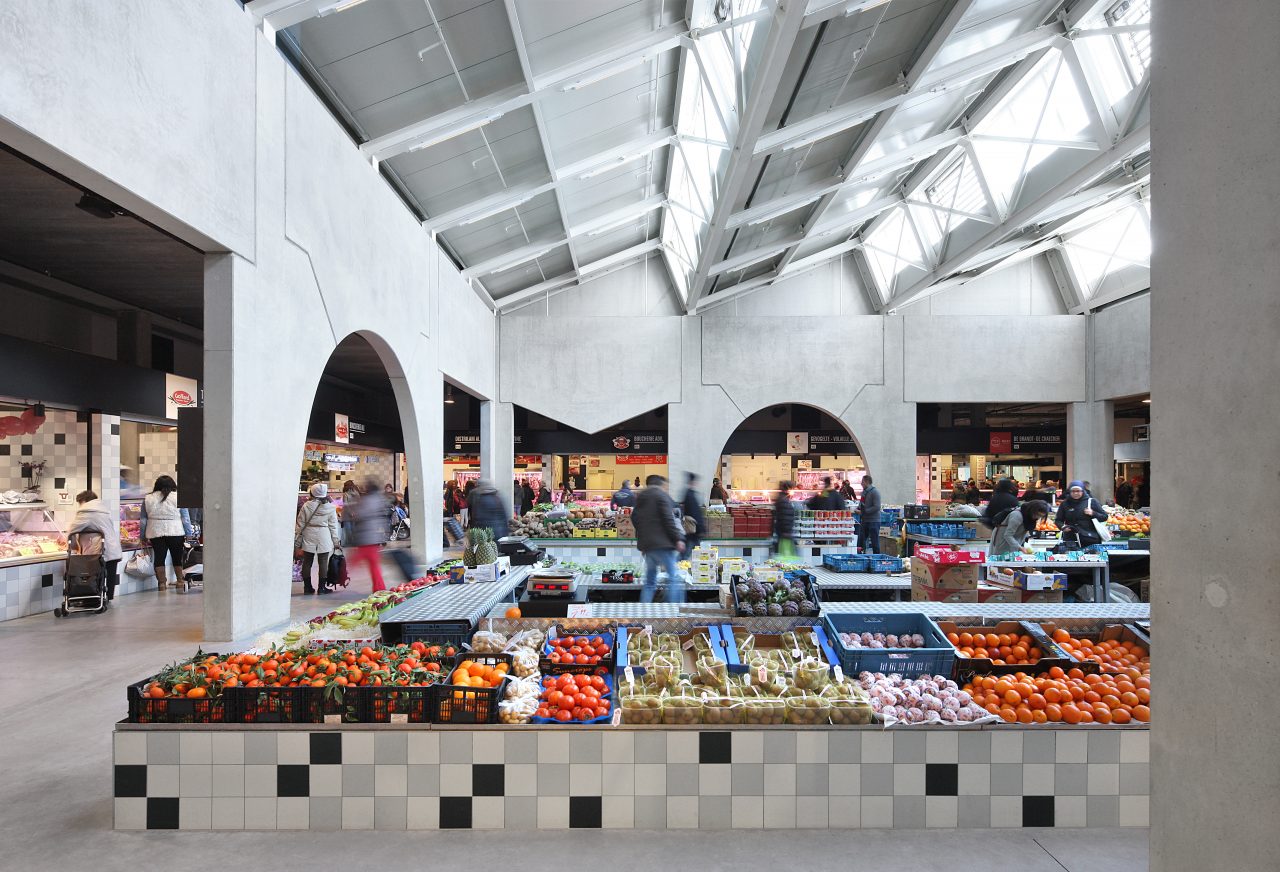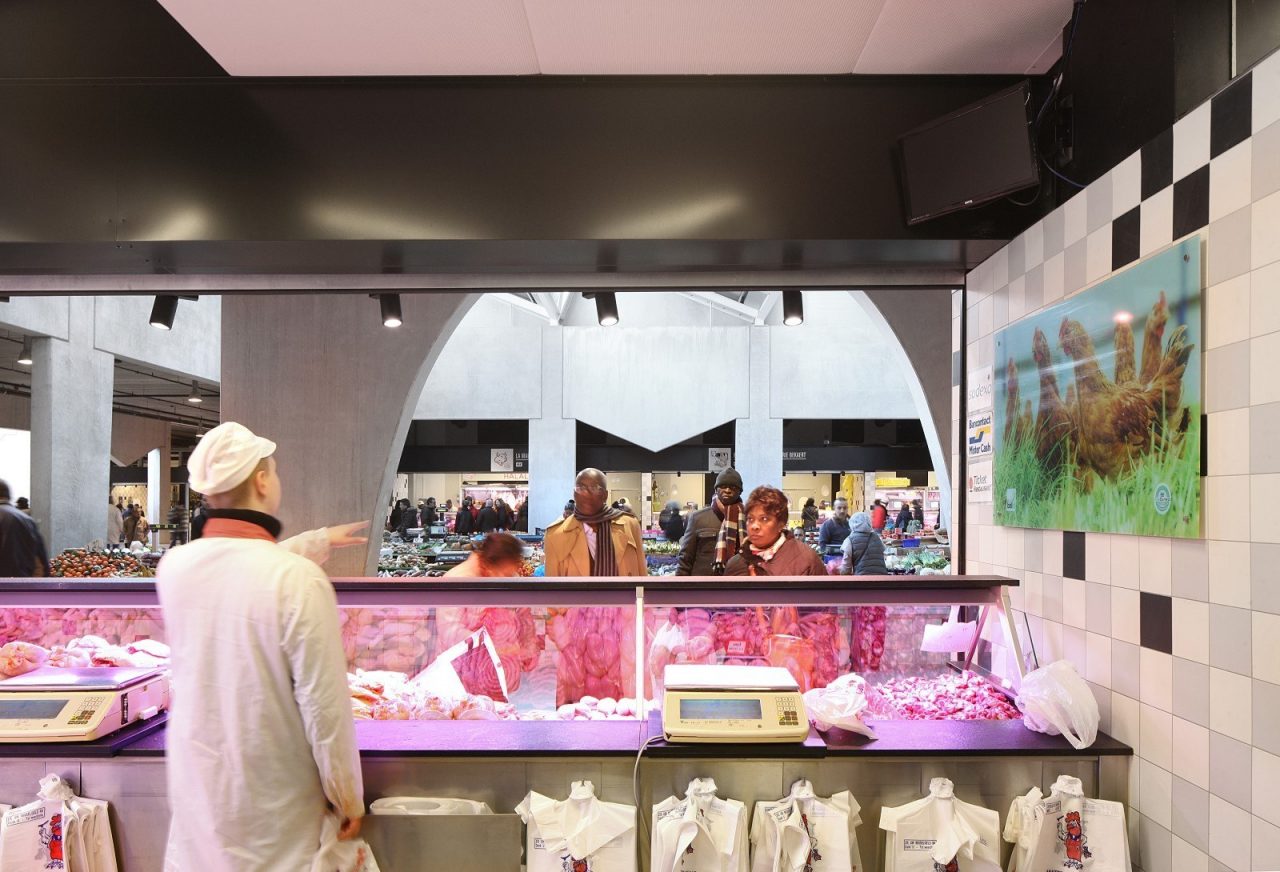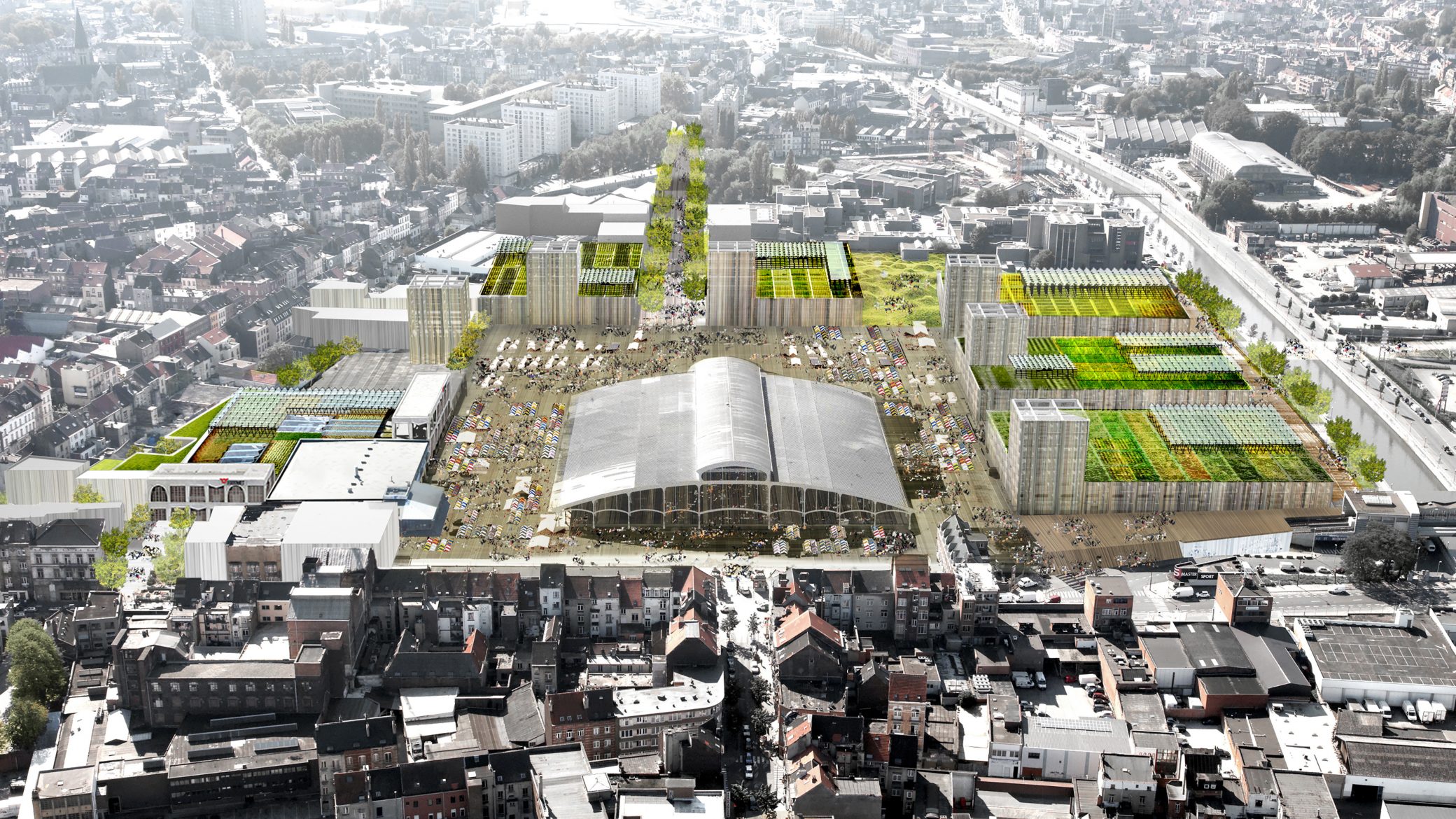Abattoir Foodmet

The Abattoir Foodmet is a Mixed-use market located in the immigrant neighborhood of Anderlecht in Brussels, less than 2.5km (1.5mi) from Brussel Centraal train station. The neighborhood houses many immigrants who are new to the city, acting as a landing place for new arrivals. The project includes industrial meat production facilities, various public market stall types, logistics, parking spaces and an active large-scale commercial urban roof farm for produce and fish, the largest in Europe (4000 m2, 43,000 ft2). The roof garden supplies related retail programs including a farm-to-table restaurant.
The market building, opened in June 2015, as part of a district plan, converts an industrial slaughterhouse into a mixed-urban environment with residential housing, a semi-housed, public pool and fitness center along with many neighborhood amenities and activity points.


The project embodies the shared and at times conflicting interests of multiple stakeholders: from civic leaders to private developers to citizens. Numerous participants informed and helped to shape the project during the design process. ORG investigated the project feasibility, imagined development scenarios and curated neighborhood meetings and workshop sessions in order to form a well supported final design.
The building has set the stage for future development through its proportions, construction logic and most importantly, by its defined edges and new public spaces for a larger
master plan. In addition, as the first project of a larger urban vision, the
Food Market acts as a symbol and an iconic central building that communicates the current
values and aspirations of a community of users.
The Foodmet is a building with a civic presence. However, the character of that civic presence is not predetermined by an architectural style or spatial configuration. The different floors are adaptable to serve almost any function: zoned programs, parking, logistics, plaza gathering, farming, working or living. The project constructs dozens of identical rooms, each connected with those that are adjacent. The flexible system is made possible by a variety of repeatable concrete wall panels. The Foodmet represents a vision for a contemporary urban warehouse – a building with a clear urban form, but no mandatory content. The volume animates according to the needs and desires of its users over time.
ELEMENTS - PLATONIC PANELS
The ‘Platonic Panels’ were invented to accommodate the dynamic and mixed-uses of contemporary urban life. First built for the Mixed-use market (Abattoir Foodmet) in Brussels, the spatial enclosure system has been displayed in numerous exhibitions internationally including Media Lab, MIT, Cambridge (2011), Art Institute of Chicago (2014-2015), and the Main Pavilion exhibition at the Venice Biennale (2016).
The Platonic panels combine to create the contemporary urban warehouse concept. The panels form over-dimensioned porticos, dozens of large identical rooms that can accommodate almost any use. Like Kazimir Malevich’s ‘White on White’, the defined spaces reflect the self-identity and pluralism of its users.
The panels are flat abstract planes with cut-outs that join together to define porticos, or flexible use zones. These spatial assemblages and environments fit together to create an array of sizes and shapes. The panels are generously dimensioned to assert the abstract plane as a strong definition of space, and/ or allow space to be infilled with the mezzanine floors. The panels can be stacked vertically to further increase the functional possibility and building area.
The panels are made from reinforced “industrial” concrete using steel formwork, not wood. They were prefabricated, cast flat inside a factory workshop. Each panel consists of columns and beams.
At the exterior facade, the panels consist of a structural load-bearing panel (interior side), and a ‘facade’ panel (exterior side). There is 8cm of insulation and 2 cm of space between them. The ‘rough’ surface - the side of the panel open to the air during casting - is always positioned to face the inner wall, and is thus never visible while the visible surfaces are polished by hand.
Location
Brussels, Belgium
Year
2009 - 2015
Area
21000 m2
Team
Alexander D’Hooghe, Natalie Seys, Luk Peeters, Griet Kuppens, Steve Swiggers, Wim François, Sanne Peeters, Kobi Ruthenberg, Pierre Dugardyn, Larisa Ovalles, Joseph O'Connor, Theo Issaias, Yen Van Der Voort, Felix Lauffer, Andrew Corrigan, Michiel De Potter, Nida Rehman, Maria Simon
Collaborators
Hinton Partners, VK Engineering, Gut-T Architects, TPF Engineering, 3E, Evert De Baere (Stramien architecten)
Mission ORG
Architecture design, Construction
Image / Photo credits
Photographer Filip Dujardin
Program
Commercial, Public Space
Related Projects





